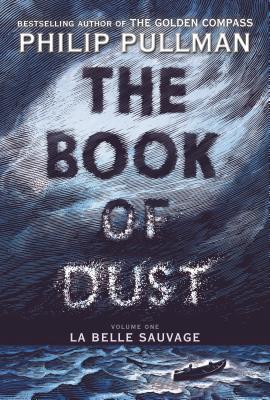 There’s two different kinds of prequels.
There’s two different kinds of prequels.
The first is most interested in the world of the story it is prequalizing. It will feel familiar in setting and tone, but the plot and events will only be distantly related. The story is self-contained, regardless of what occurs in the chronological future and literary past. I prefer this type.
The second is concerned with the characters and the events that led them to the place they start the original story. It elaborates on missing details of their personality or backstory and in general fills in the gaps. Unlike the first kind, this prequel relies on the reader having first read the original work.
The Book of Dust, whose plot revolves around the fate of baby Lyra, the child protagonist of the His Dark Materials series, is the second type. While Lyra is not the main character here (she’s an infant), the story is all about answering questions of her past and putting her in the place she’ll eventually start the main series. The reason I like this structure less than the first is that the big important stuff has already happened. Actually, it has yet to happen but I’ve already read it. It makes everything feel like small potatoes as the the plot, regardless of how well written or interesting it might be, is all set-up for the big stuff.
I read the big stuff 20 years ago. His Dark Materials stuck with me as a young teen, as very few young adult books did then or since, which is why I picked this book up as soon as I saw it front-and-center at the book store. Pullman does not insult his reader’s intelligence and his splendid prose was (and is) far better than most authors writing for young people. The language is largely indistinguishable from an adult book and occasionally when he uses an unfamiliar word, Pullman will turn it into a learning experience. For instance, on page 3, you read:
More than once Malcolm had ferried Sister Benedicta to the Royal Mail zeppelin station with a precious parcel of stoles or copes or chasubles for the bishop of London, who seemed to wear his vestments very hard, for he got through them unusually quickly.
Then a page or two later, Malcolm asks Sister Benedicta what a chasuble is. It’s a clever device. It bonds the reader to Malcolm by acknowledging you were both thinking the same thing and it establishes the narrator as a warm presence who is thoughtful in regards to how the reader is absorbing each individual word.
The Book of Dust, despite being lettered all big on the cover is actually the series’ name. Book 1 is technically called La Belle Sauvage, which is the name of the sturdy canoe of our eleven year old hero, Malcolm Polstead. Far up the Thames from London lies a cozy inn named the Trout, across from an old stone bridge where a Priory full of nuns sells baked goods and provides sanctuary to weary travelers and political dissidents alike. This is Malcolm’s world, as the son of the innkeepers, frequent student of the nuns, and river adventurer atop La Belle Sauvage. The first half of the novel lies entirely within this setting. The nuns take in a particularly unusual guest. Shady figures roam the inn and priory at night. The ever-oppressive Church invades Malcolm’s school. While slow-paced and somewhat uneventful, it’s easy to become absorbed in the day to day drama of the locale. It’s the book’s better half.
The second half of the book is the inevitable adventure awaiting all boys with trusty boats. The Thames floods and Malcolm is whisked away towards London, bearing a precious cargo. The setting shifts here, uneasily from science-based-magic to pure fairy tale. Underwater giants and faerie queens. Magic mirrors and fruit. It’s not a good shift. Pullman dabbles in archetypal stories and is simply not as good at it as he is with other themes, and worse, not as good as good as other writers who have done the same. Everything from impossible waterfalls to phantom villages peopled by ghosts are crucially lacking the enchantment they require. On top of this, the final confrontation with the main antagonist is stupid in like six separate ways. Too bad; he was a good villain.
The climatic scene wherein we arrive in London is rushed (strange for a book twenty years in the making) and as I closed the back cover, I was left with a general feeling of “huh.” I still enjoyed it. It’s hard to say how much of this was on La Belle Sauvage’s own merits versus the hoary roots of nostalgia sunk deeply in my childhood, but I’ll almost certainly continue on to book two.
Share this:




